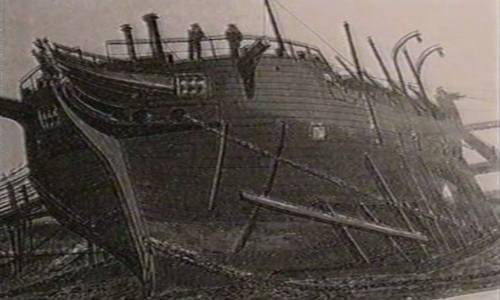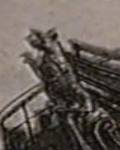I was just re-watching an old BBC TV documentary about the hunt for the final resting place of HMS Beagle. At one point, they showed this remarkable photograph (apologies for the poor quality: it's a frame-grab from a VHS tape showing a close-up from a book):

HMS Kangaroo was one of HMS Beagle's sister ships, and, by a pleasing co-incidence, finished her days just like Beagle, as a static customs and excise watch vessel in Paglesham Marshes, Essex. The documentary explained how researchers have now pinpointed the exact location in the marshes at which Beagle's remains lie buried.

As far as I know, no photographs survive of Darwin's Beagle—if, indeed, any were ever taken. So this could well be the closest we shall ever come to seeing the original Beagle in all her faded glory. Until they dig up her remains from the marshes, it is to be hoped. (Note to would-be Beagle excavators: I am a trained archaeologist, and have my own trowel.)
But there was something in particular that delighted me about this photograph of HMS Kangaroo. Previously, I have mused wistfully about whether Beagle had a figurehead in the shape of a beagle. Now, I am convinced she must have. For there, in plain view on this wonderful old photograph, is very clearly a figurehead in the shape of a kangaroo.
If Kangaroo had a kangaroo, then Beagle must have had a beagle. It stands to reason!
Postscript: It would seem that HMS Kangaroo was not the only one of Beagle's sister ships to end her days on the Essex marshes. More here.